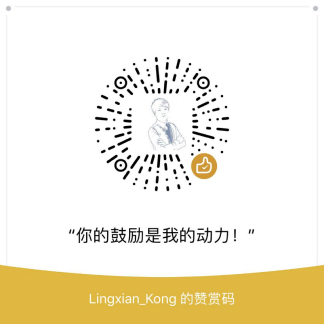OpenStack Trove Project Update
本博客所有文章采用的授权方式为 自由转载-非商用-非衍生-保持署名 ,转载请务必注明出处,谢谢。
声明:
本博客欢迎转发,但请保留原作者信息!
新浪微博:@Lingxian_kong
博客地址:孔令贤的博客
微信公众号:飞翔的尘埃
知识星球:飞翔的尘埃
内容系本人学习、研究和总结,如有雷同,实属荣幸!
This blog was sent to openstack-discuss mailing list originaly.
As the official Victoria release is approaching and it has been a long time silence for Trove in the upstream, I think it’s good time for me as the Trove PTL for the last 3 dev cycles to have a project update. The things that will be described below have not been achieved in one single dev cycle, but are some significant changes since the ‘dark time’ of Trove project in the past. Tips hat to those who have made contributions to Trove project ever before.
Service tenant configuration
Service tenant configuration was added in Stein release, before that, it’s impossible to deploy Trove in the public cloud (even not for some private cloud due to security concerns) because the user may have access to the guest instance which contains sensitive data in the config files, the users can also perform operations towards either storage or networking resources which may bring much management overhead and make it easy to break the database functionality.
With service tenant configuration (which is currently the default setting in devstack), almost all the cloud resources(except the Swift objects for backup data) created for a Trove instance are only visible to the Trove service user. As Trove users, they can only see a Trove instance, but know nothing about the Nova VM, Cinder volume, Neutron management network, and security groups under the hood. The only way to operate Trove instances is to interact with Trove API.
Message queue security concerns
To do database operations, trove controller services communicate with trove-guestagent service inside the instance via message queue service (i.e. RabbitMQ in most environments). In the meantime, trove-guestagent periodically sends status update information to trove-conductor through the same messaging system.
In the current design, the RabbitMQ username and password need to be configured in the trove-guestagent config file, which brought significant security concern for the cloud deployers in the past. If the guest instance is compromised, then guest credentials are compromised, which means the messaging system is compromised.
As part of the solution, a security enhancement was introduced in the Ocata release, using encryption keys to protect the messages between the control plane and the guest instances. First, the rabbitmq credential should only have access to trove services. Second, even with the rabbitmq credential and the message encryption key of the particular instance, the communication from the guest agent and trove controller services are restricted in the context of that particular instance, other instances are not affected as the malicious user doesn’t know their message encryption keys.
Additionally, since Ussuri, trove is running in service tenant model in devstack by default which is also the recommended deployment configuration. Most of the cloud resources(except the Swift objects for backup data) created for a trove instance should only be visible to the trove service user, which also could decrease the attack surface.
Datastore images
Before Victoria, Trove provided a bunch of diskimage-builder elements for building different datastore images. As contributors were leaving, most of the elements just became unmaintained except for MySQL and MariaDB. To solve the problem, database containerization was introduced in Victoria dev cycle, so that the database service is running in a docker container inside the guest instance, trove guest agent is pulling container image for a particular datastore when initializing guest instance. Trove is not maintaining those container images.
That means, since Victoria, the cloud provider only needs to maintain one single datastore image which only contains common code that is datastore independent. However, for backward compatibility, the cloud provider still needs to create different datastores but using the same Glance image ID.
Additionally, using database container also makes it much easier for database operations and management.
To upgrade from the older version to Victoria onwards, the Trove user has to create backups before upgrading, then create instances from the backup, so downtime is expected.
Supported datastores
Trove used to support several datastores such as MySQL, MariaDB, PostgreSQL, MongoDB, CouchDB, etc. Most of them became unmaintained because of a lack of maintainers in the community.
Currently, only MySQL and MariaDB drivers are fully supported and tested in the upstream. PostgreSQL driver was refactored in Victoria dev cycle and is in experimental status again.
Adding extra datastores should be quite easy by implementing the interfaces between trove task manager and guest agent. Again, no need to maintain separate datastore images thanks to the container technology.
Instance backup
At the same time as we were moving to use container for database services, we also moved the backup and restore functions out of trove guest agent code because the backup function is usually using some 3rd party software which we don’t want to pre-install inside the datastore image. As a result, we are using container as well for database backup and restore.
For more information about the backup container image, see https://lingxiankong.github.io/2020-04-14-database-backup-docker-image.html.
Others
There are many other improvements not mentioned above added to Trove since Train, e.g.
- Access configuration for the instance.
- The swift backend customization for backup.
- Online volume resize support.
- XFS disk format for database data volume.
- API documentation improvement.
- etc.
By the way, Catalyst Cloud has already deployed Trove (in Alpha) in our public cloud in New Zealand, we are getting feedback from customers. I believe there are other deployers already have Trove in their production but running an old version because of previous upstream situation in the past. If you are one of them and interested in upgrading to the latest, please either reply to this email or send personal email to me, I would be very happy to provide any help or guidance. For those who are still in evaluation phase, you are also welcome to reach out for any questions. I’m always in the position to help in #openstack-trove IRC channel.
